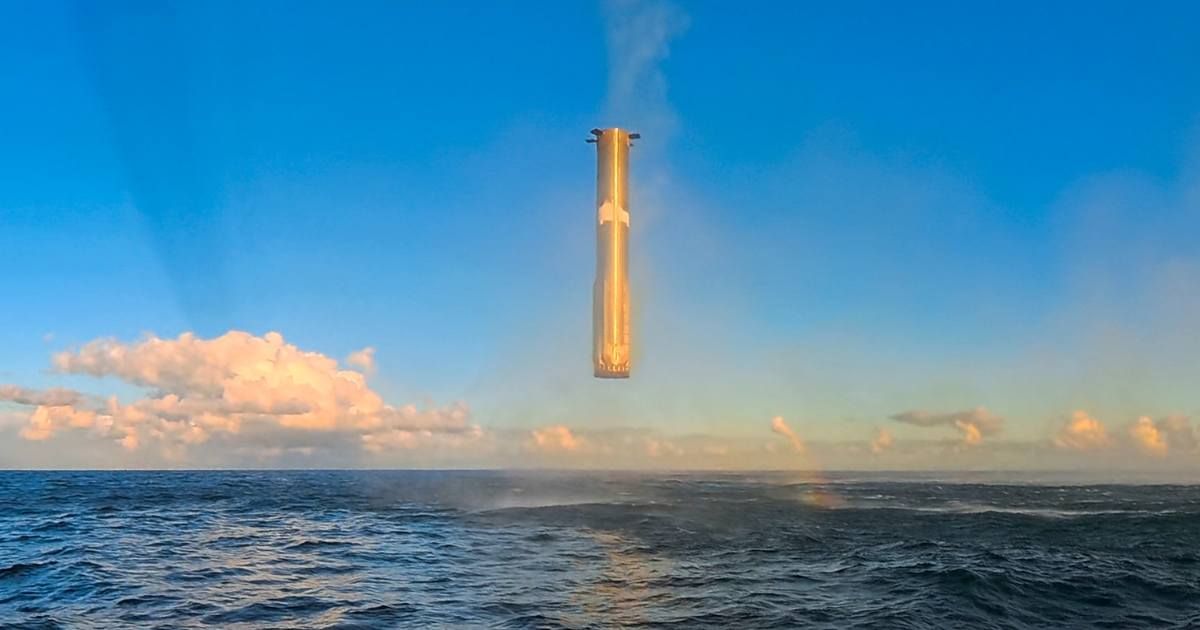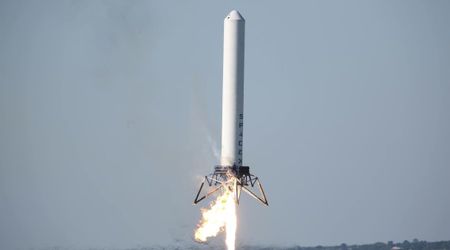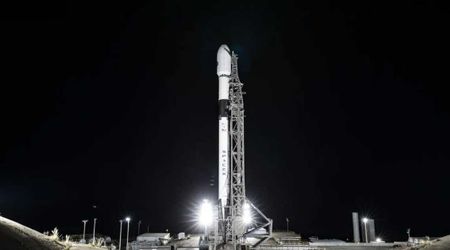Watch SpaceX's Super Heavy Booster make 'picture perfect' dive after stunning mid-air hover over the Gulf

The second generation of SpaceX's colossal Starship launch system concluded its development phase on a high note, with the Super Heavy booster executing a planned descent into the Gulf of Mexico after a powerful and successful ascent, as per Space.com.
Watch Starship's eleventh flight test → https://t.co/YmvmGZTV8o
— SpaceX (@SpaceX) September 29, 2025
https://t.co/zIRMX5mh9K
The massive rocket lifted off from the Starbase facility in South Texas on Monday, October 13, 2025, at 6:23 p.m. CT. The mission, designated Flight Test 11, marked the final use of the existing Launch Pad 1 configuration and was deemed a resounding success by the company, achieving every primary objective. The ascent began with the simultaneous ignition of the Super Heavy's 33 Raptor engines over the Gulf. This was swiftly followed by a crucial hot-staging maneuver, where the upper-stage Ship fired its own six engines while still connected to the booster, separating to continue its trajectory toward space.
33 Raptor engines powering the Super Heavy booster off the pad from Starbase pic.twitter.com/BBuDMFRSll
— SpaceX (@SpaceX) October 16, 2025
While the Ship went on to complete a soft landing in the Indian Ocean, a picture-perfect end to its hour-long journey, the Super Heavy booster concluded its mission just over six minutes after liftoff, per Space.com. Spectacular video released by SpaceX captured the booster's final moments as it hovered briefly before executing its controlled plunge into the water. This was only the second time this particular booster had been flown, advancing SpaceX's reusability goals.
Starship successfully executing a landing flip, landing burn, and soft splashdown pic.twitter.com/ftAWwk3B33
— SpaceX (@SpaceX) October 16, 2025
Flight Test 11 served as the swan song for this version of the launch system, redeeming the vehicle after a challenging year of development. This flight and its predecessor, Flight Test 10, have provided critical information for the next, larger iteration of the spacecraft and its powerful booster. "Let 'em hear it, Starbase! What a day!" exclaimed SpaceX spokesperson Dan Huot following the success, met with enthusiastic cheers from the company team. The flight generated vital data that will inform the development of the company's ambitious next-generation rockets.

This latest launch adds to SpaceX's already staggering manifest of flights. According to the data on SpaceXNow, the Starship vehicle is still in its infancy, with only 5 fully successful missions out of 11 attempts (45.45% success rate) from Starbase to date. In contrast, the workhorse of the fleet, the Falcon 9, maintains a near-perfect operational record, accounting for 545 successful missions out of 548 launches (99.45% success rate). The Falcon 9 Block 5, the current iteration, boasts an even higher success rate of 99.80% (490 out of 491 missions). The company's heavy-lift variant, the Falcon Heavy, has achieved a perfect 100% success rate across its 11 flights.
Overall, the company has completed 563 successful orbital missions out of 575 total attempts (97.91%). This sustained high cadence and reliability, featuring a streak of 194 consecutive mission successes and a record of 335 consecutive launches between failure events, establishes the foundation upon which the Starship program is now being built.

The Starship vehicle remains integral to CEO Elon Musk's long-term vision of establishing a permanent human presence on Mars. Closer to Earth, the spacecraft has been selected by NASA to serve as the crewed lunar lander for the Artemis program. Starship is currently slated to deliver astronauts to the Moon's south pole on the Artemis 3 mission, a highly anticipated flight targeted for 2027 that would represent the first crewed lunar landing since the Apollo era.

More on Starlust
SpaceX set to launch upgraded Starship V3 for ambitious missions after successful V2 swansong
SpaceX aims to shatter records with 170 orbital launches in 2025, nearly one every other day









